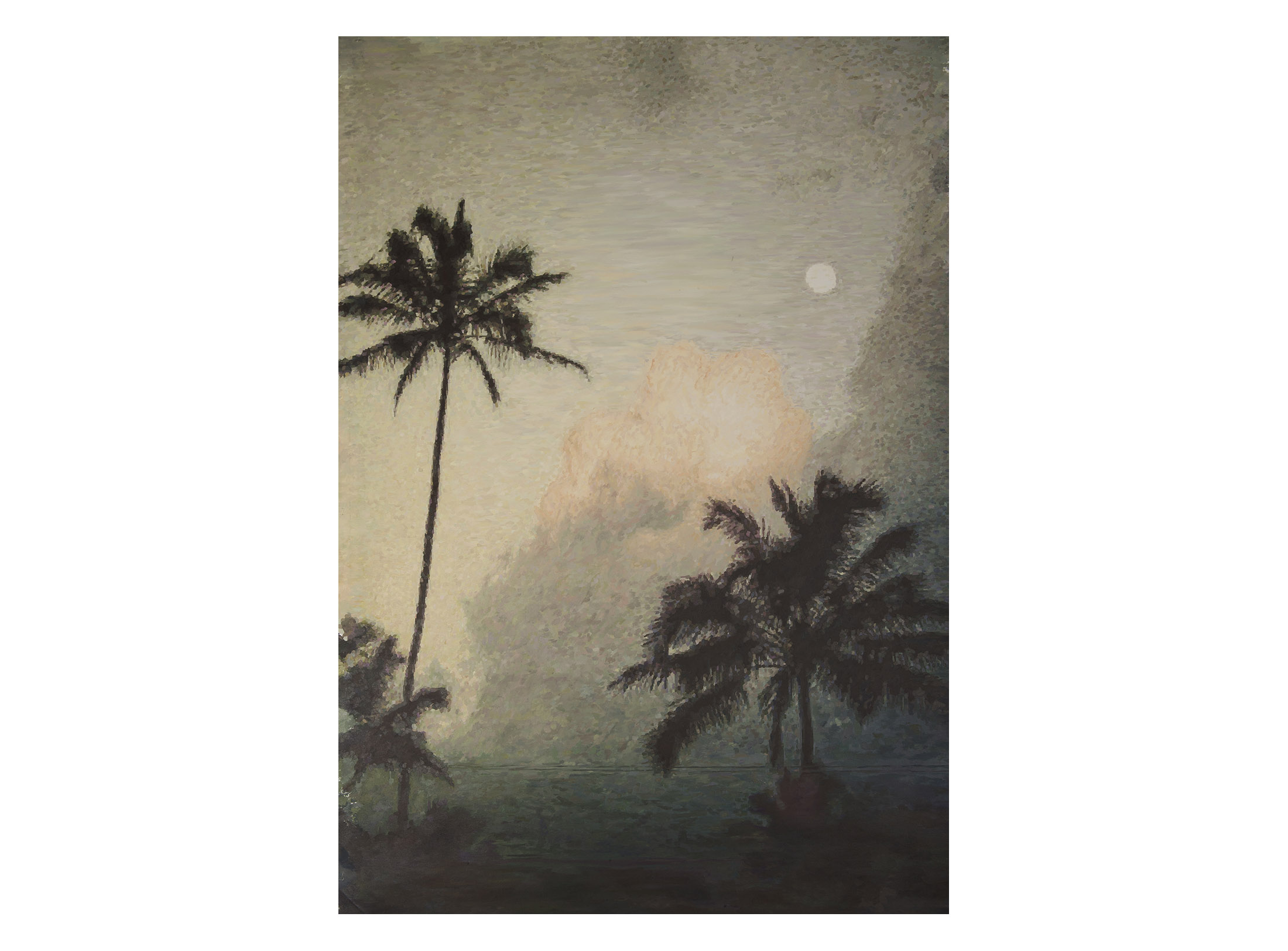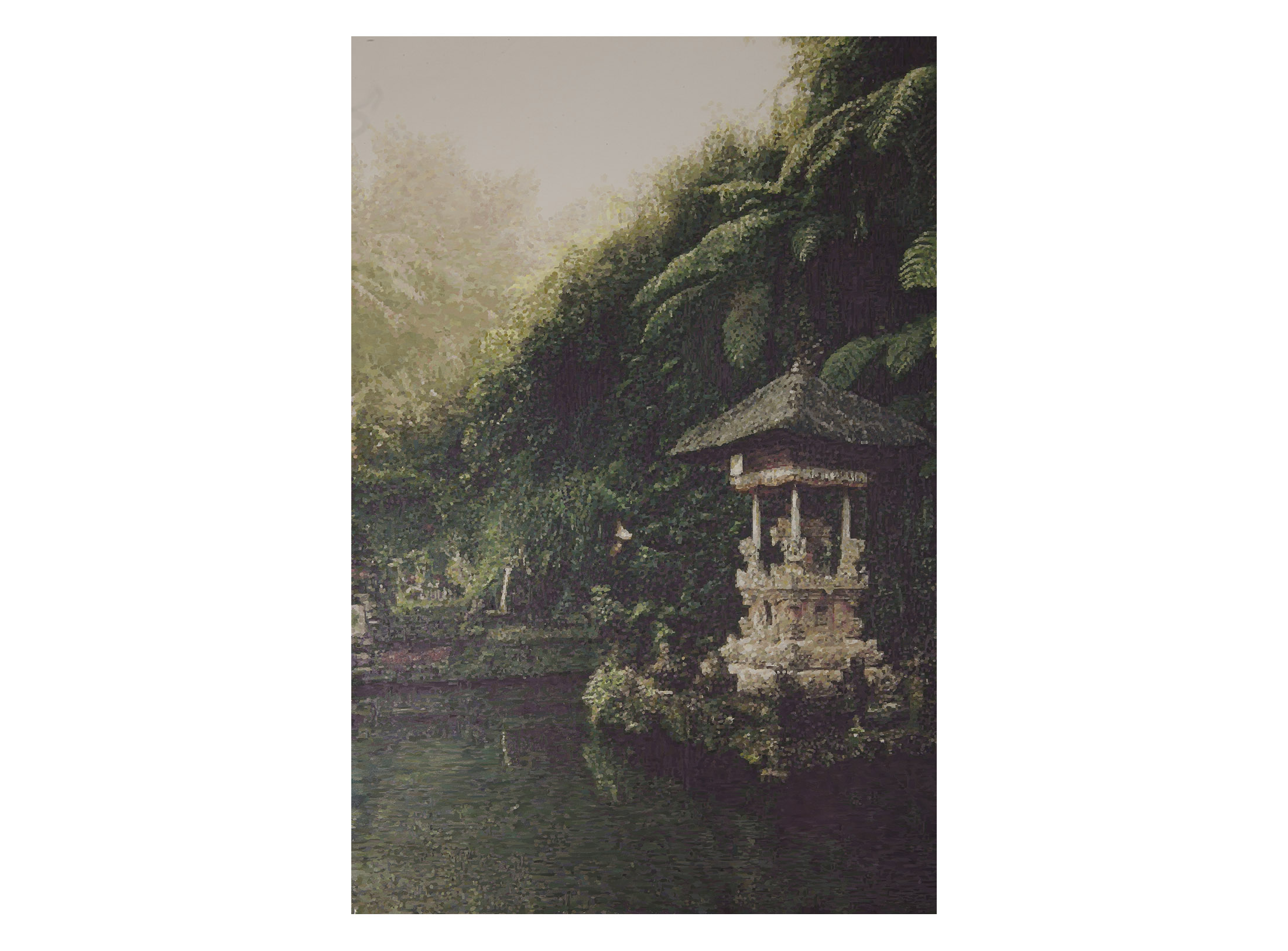Queen's Bath
2015, presentation in
SecondRoom, Ghent BE
Press
DeMorgen, H Art Magazine, De Witte Raaf
'Ná Áumākua Ánuenue' is a painting series by artist Emerald Whipple combining Landscapes from both the show 'Eden' and the 'Queens Bath'. This series, analogous to Whippleʼs previous works from her exhibition, intimately captures the natural beauty of the earth. The narrative offers the viewer an especially intimate glimpse of the spiritual energy, which embodies the life of nature touching on traditional Hawaiian Mythology. The tropical paintings were specifically created to honor the life of the artist’s mother who had recently passed and to pay respect of her spirit.
In Hawaiian mythology, both an Áumākua and an Ánuenue hold sacred symbolism and spiritual importance. An Áumākua is a family god, often a deified ancestor. Ánuenue (Hawaiian for Rainbow) are considered to be the celestial path Hawaiian Gods use to visit the earth but they are also the pathways for deceased souls to transport to heaven. The Rainbow primarily represents transformation and is present for those who can connect to the spirit and “upper” world. Nāáumākua were worshipped at localities often rocks where they were believed to "dwell". ʻAumākua can manifest in nature though the form varies family to family. A symbiotic relationship exists between person and áumākua, they are considered to be personal guardians of each individual and their family. The Hawaiian mythological narratives are represented by the visual dialogue, which is created between the two different tropical paintings.
Accompanying the Tropical Landscapes is a series of oil paintings depicting organic moss formations on rocks. Nā áumākua were often worshipped and believed to "dwell" at rocks creating a curatorial habitat for the tropical spirit paintings. The four moss paintings are a representation of the Ojai Valley in California where she had spent her formative youth. The extraordinary density and richness of the moss techniques, as the artist has come to develop, are like a fleeting dream of abstract vignettes of illuminated natural formations that oscillate between surrealistic and hyper-realistic impressionism. The moss paintings are viewed not only as purely visual compositions but also as a celebration natures color palette.
'Ná Áumākua nuenue' showcases the stylistic progression of Whippleʼs pursuit of painting. The viewer is invited to witness the artists ever-evolving brushwork on display throughout the series, the artist is intrigued by characteristic blending through color layering. Dry brush blending is then coupled with dramatic light-dark tones that comprise a transitional experience for the viewer. Between this period and the present Whipple had focused on the relationship, between Impressionism and pointillism and redefining her painting style from a fluid, layered stroke to a pointillist vivid micro brush technique.









